• Jonathan Taylor is elite in the right conditions: Taylor has been excellent in the right conditions and, on paper, he should be in those conditions often.
• Injuries are the main concern for Taylor: Taylor has missed 13 games over the last two seasons, robbing us of Taylor’s prime.
• Get a head start on fantasy football: Use PFF's fantasy football mock draft simulator to create real live mock draft simulations to get ready for your live draft!
Estimated reading time: 6 minutes
The player profile series gives the most in-depth view of a player possible using the best data points at PFF’s disposal to look at how good the player has performed, what competition the player has for touches, and how other teammates and coaches will impact each player's performance.
Last updated: 7:15 a.m. Friday, July 12
Player performance
An argument could be made in 2021 for Jonathan Taylor to be the best back in the NFL after earning the best overall grade for running backs that season, but the last two seasons have been full of injuries. In 2022, he was dealing with a pedal ankle sprain, which also caused him to miss the start of the 2023 season. Taylor missed more time due to a thumb injury. Taylor is now 25 years old, which is past the peak age for running backs.
Those injuries had a major impact on his efficiency but luckily the Indianapolis Colts still gave him all of the volume you would expect out of a feature running back. Ideally, he is fully recovered from those injuries at this point.
As a runner, he has been elite when everything is going right. If he can follow his point of attack, if the play is perfectly blocked, or if he only has to face seven players in the box, he’s ranked in the 95th percentile or better of running backs despite being injured on and off for two of the last three years. When things aren’t going his way, he’s below average compared to other running backs. His ability to become the league’s leading rusher again will depend on the situation going right.
As a receiver, Taylor has been given plenty of opportunities but hasn’t been very effective. It’s at least possible his workload will get reduced on third downs, but that shouldn’t have a major impact on his fantasy production.
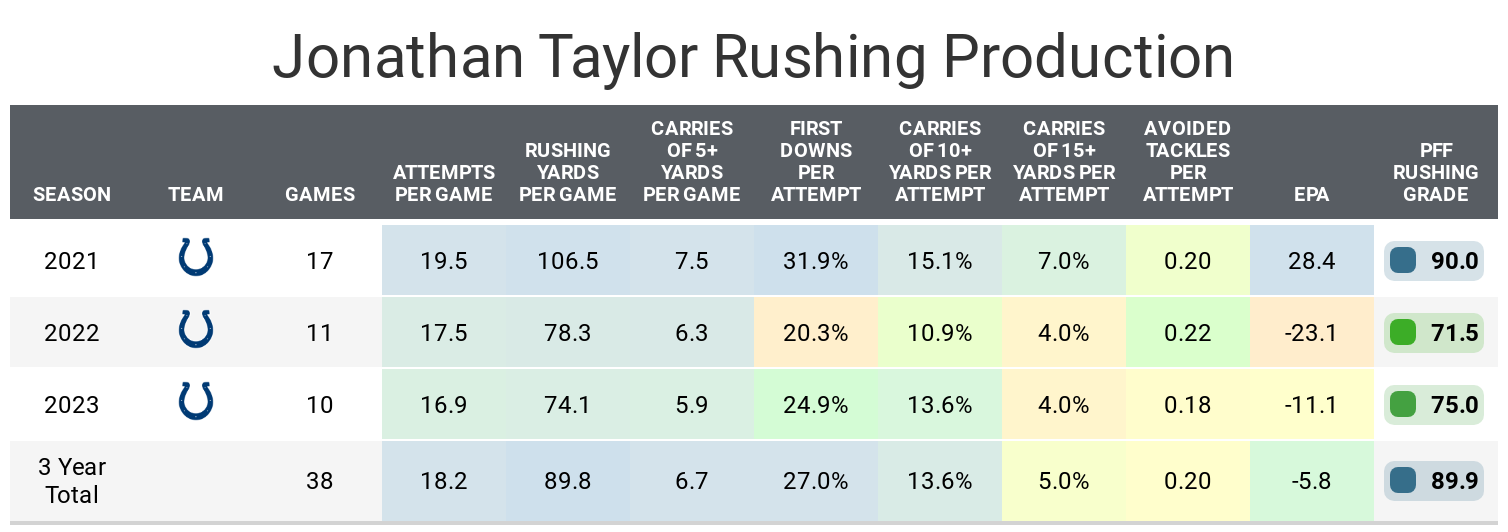
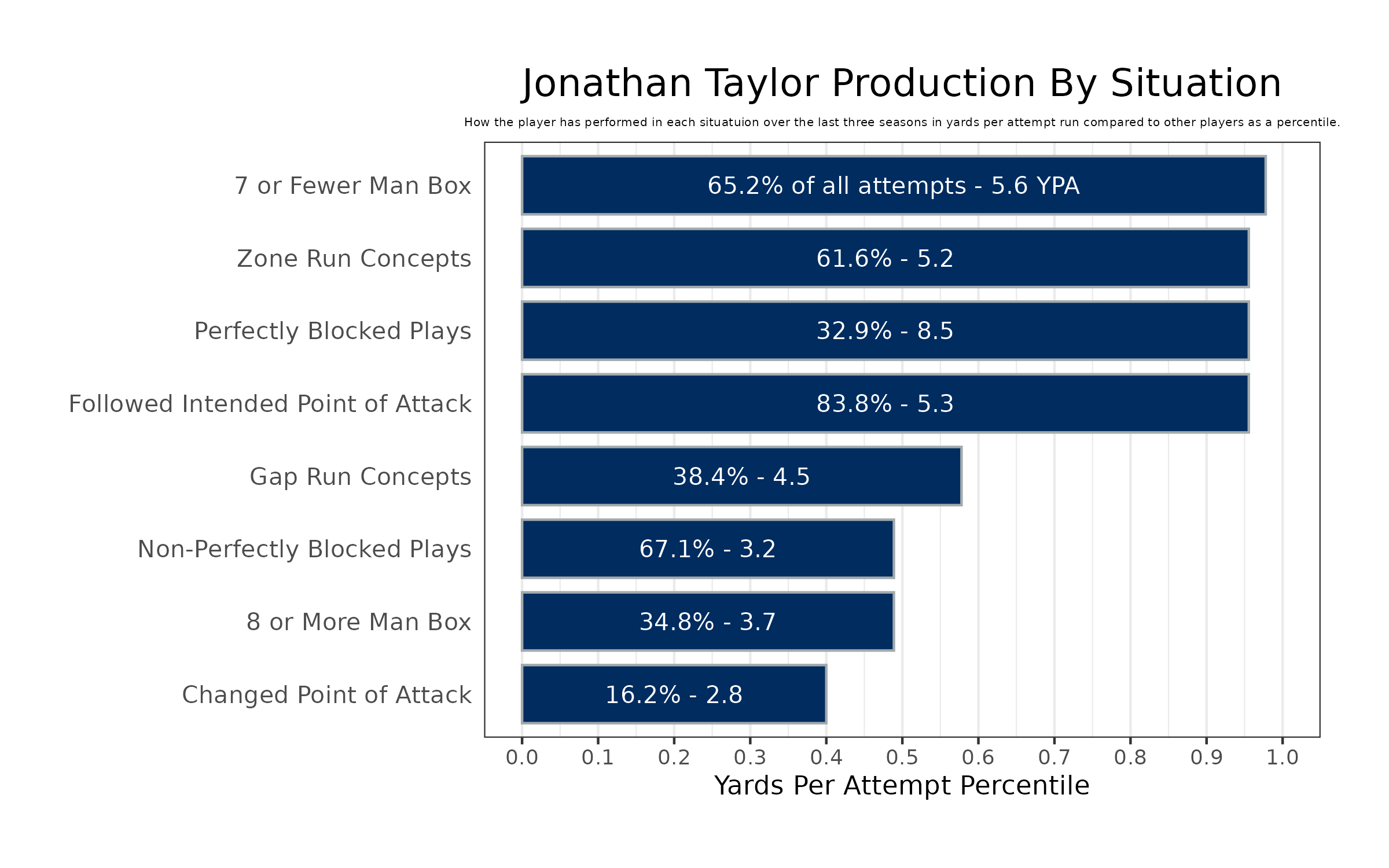
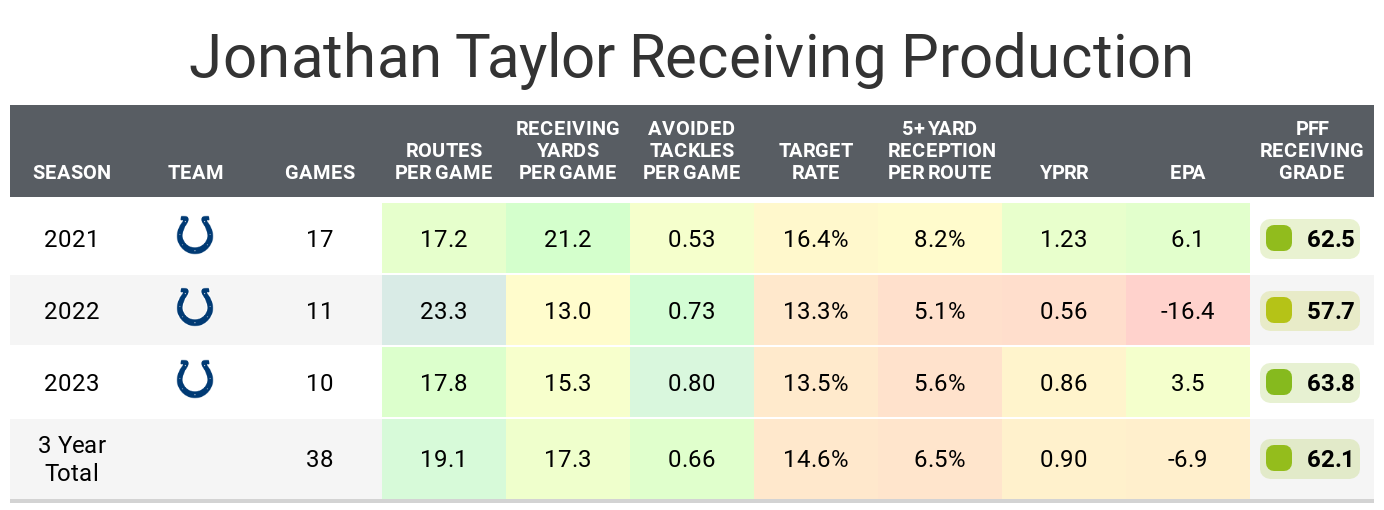
Competition for touches
One of the big reasons we all can be optimistic about Taylor’s health and role is how the Colts ignored the running back position this offseason. Zack Moss was considered the starter for Indianapolis for these graphs because of the time Taylor missed due to injury. He’s now with the Cincinnati Bengals. Instead of the Colts bringing in someone to replace Moss, they decided to stick with backups Trey Sermon, Evan Hull and Tyler Goodson.
At this point, even if the Colts bring in a veteran backup, we shouldn’t be too worried. A veteran would probably say more about the other backups than it does about Taylor. The only thing to potentially be concerned about is Evan Hull or Tyler Goodson emerging as a third-down back, but if anything that could keep Taylor fresher for his early down role.
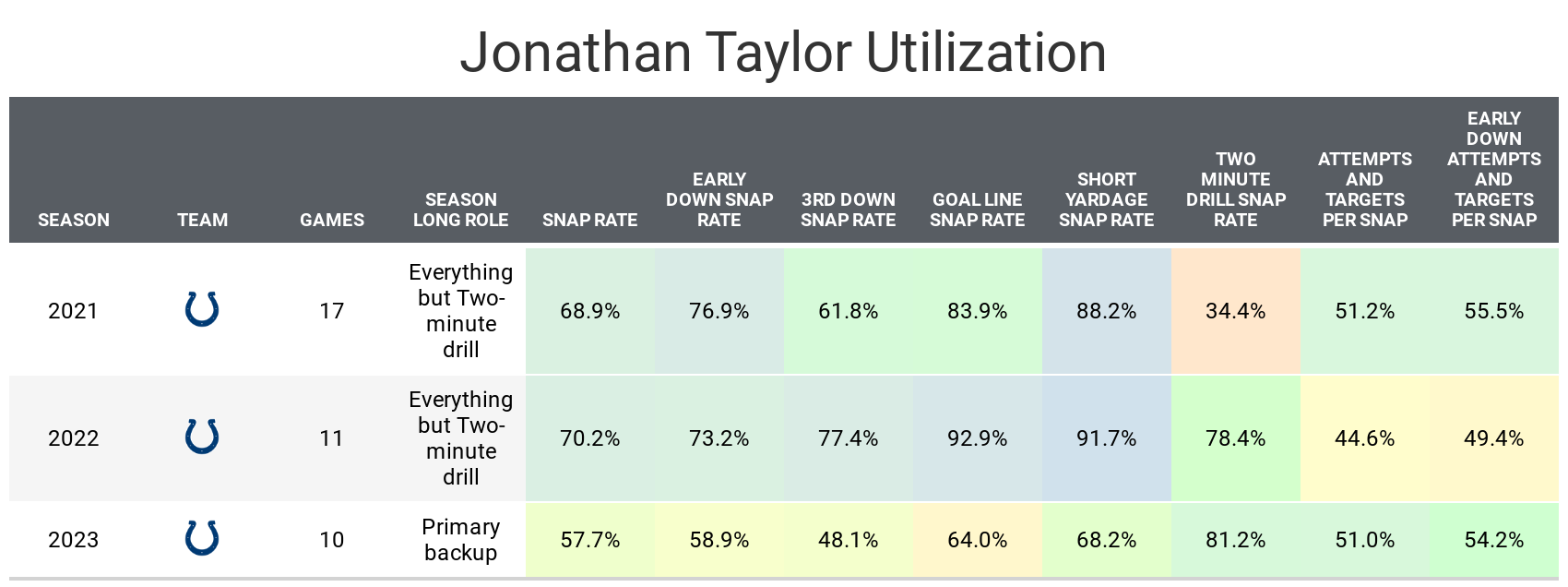
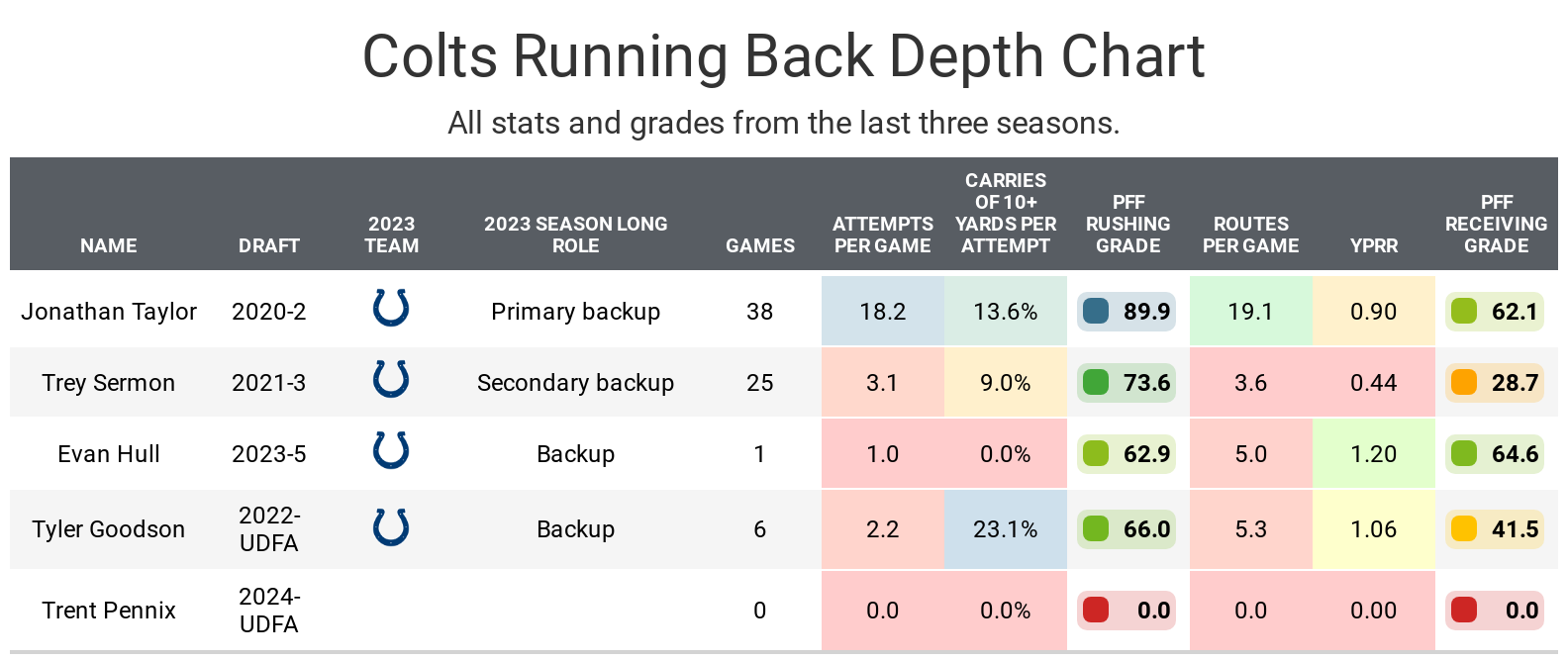
Impact of teammates
Taylor having Shane Steichen as a head coach comes with pros and cons. He’s generally had good offenses that are run heavy, which is a good thing for Taylor. The one concern is Steichen came from the Philadelphia Eagles, who made the tush push famous. The Colts' quarterback Anthony Richardson is bigger than Jalen Hurts, so it’s possible Richardson would also be good in those short-yardage situations.
When Richardson was healthy, the Colts had five opportunities to run with one yard to go. They ran with Richardson twice, Deon Jackson twice and Zack Moss once. This included one Richardson run and one by Jackson at the one-yard line. We haven’t seen Richardson and Taylor together in an NFL game yet. Just based on this small sample, Richardson could take a few touchdowns from Taylor, but not to the same extent, Hurts was taking them from the Eagles' running backs.
It’s also worth noting the Colts had the second-highest rate of running zone plays last season, and the Eagles were above average at zone rate when Steichen was coach. Taylor has averaged 5.2 yards per carry on zone runs compared to 4.5 against gap the last three years, so Steichen’s run scheme matches Taylor's strengths.
They also had the third-highest rate of using 11 personnel. Only 4% of plays out of 11 personnel faced eight-man boxes outside of the red zone last season, so this should help Taylor in avoiding eight-man boxes.
As mentioned above, Taylor does much better when things are going well, and the Colts have the third-best offensive line in the league. Part of it is their balance, as they rank top eight in pass blocking and run blocking. Having five players who were all drafted by the team and have at least a few years of experience each is impressive. They should keep a relatively high rate of perfectly blocked plays where Taylor doesn’t have to change his point of attack.

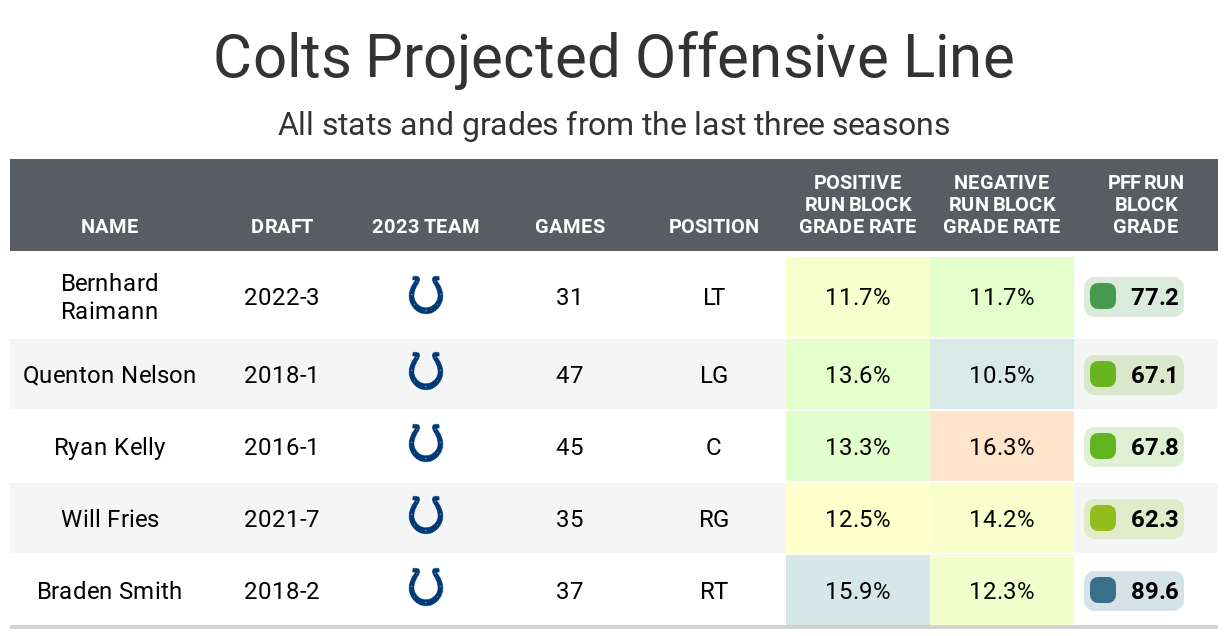
Bottom line
Taylor has been elite when the situation is in his favor, and the Colts are uniquely suited to helping Taylor succeed. If he’s back to 100%, he’s capable of finishing as the RB1 again, but there is a lot of risk of something not going perfect.

Footnotes
- Statistics for the tables and charts were generally chosen based on their ability to predict future fantasy performance on either per game or per opportunity basis, or chosen for their ability to describe the player relative to other players at the same position.
- Opportunities for this purpose are defined by passing dropbacks, rushing attempts and receiving routes run.
- Numbers are either by season or based on the last three years. For rookies, only college numbers are included. For non-rookies, only NFL numbers are included, even if they played in college in the last three years.
- Because college competition is relatively easier than NFL competition, it can be expected that most rookies will see a decline in their numbers compared to their historic numbers.
- For all of the tables in this article, colors range from blue (good or high) to red (bad or low).
- All percentiles or colors compare the given player to other players with a high sample of opportunities. Generally, it’s one-third of the possible opportunities given the sample. If the player in question doesn’t have enough opportunities, they are still compared, even though a player could look good or bad on that small sample size which might not be as predictive.
- Information on running back utilization classifications and importance can be found here, wide receiver here and tight end here.
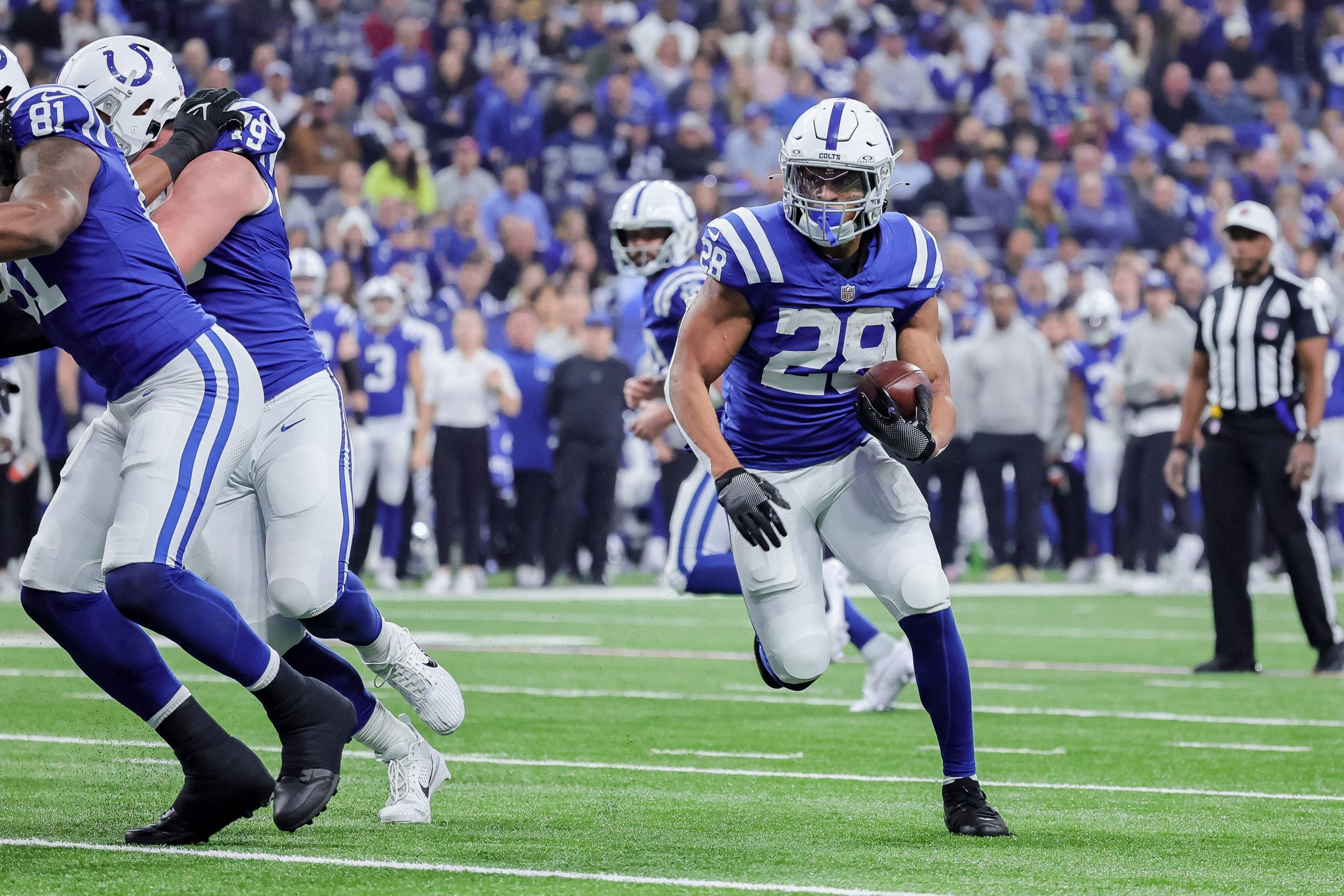



 © 2024 PFF - all rights reserved.
© 2024 PFF - all rights reserved.